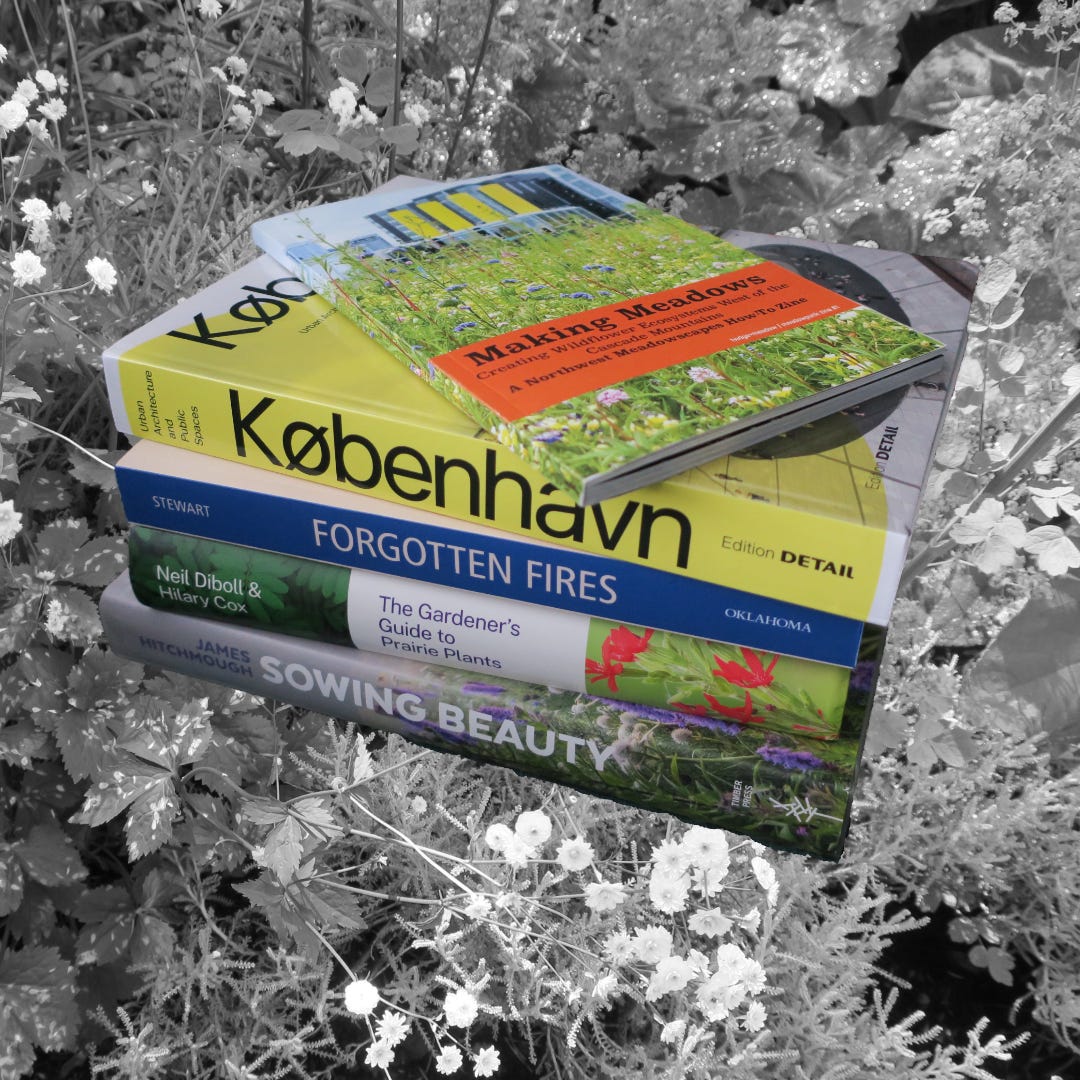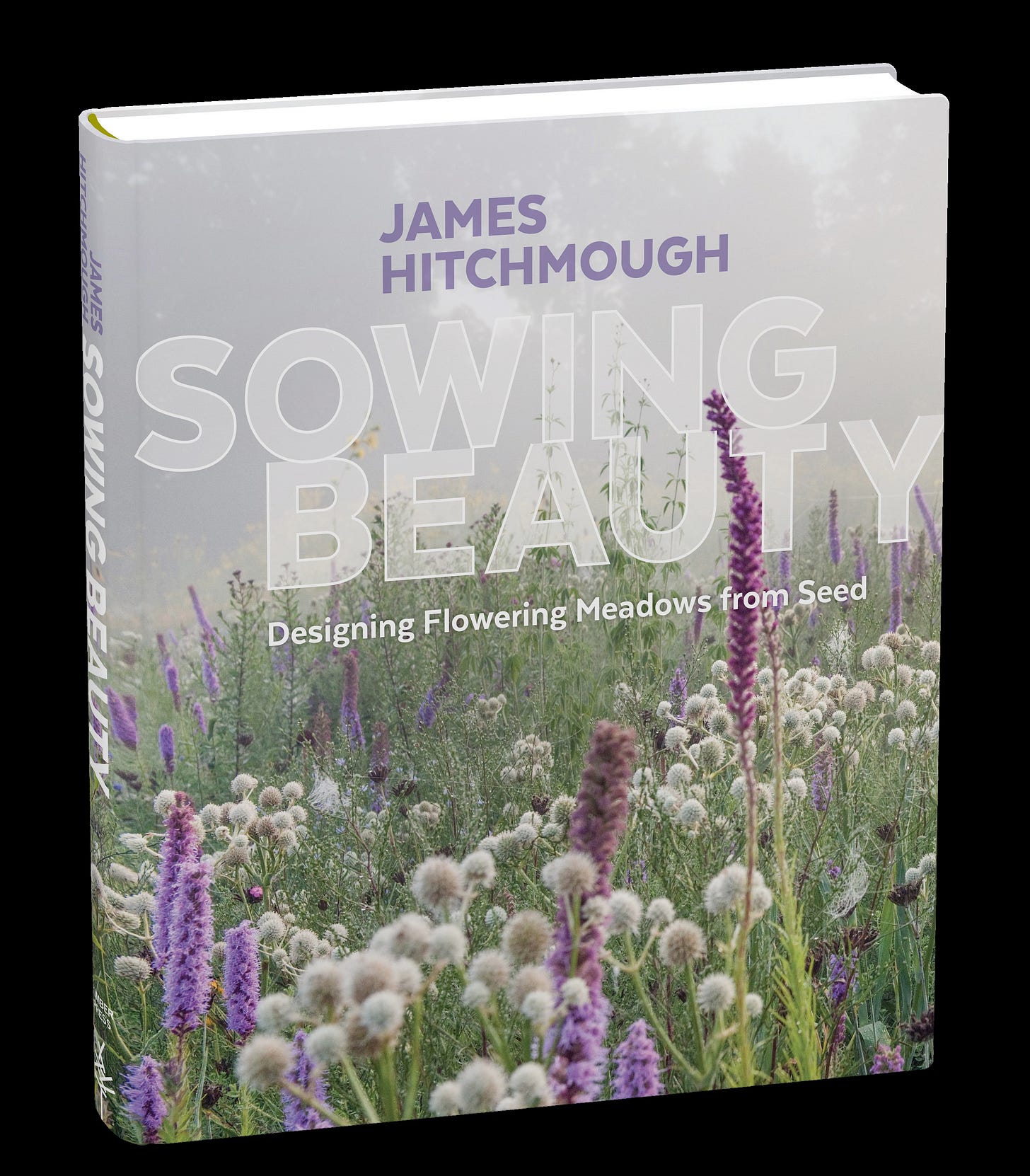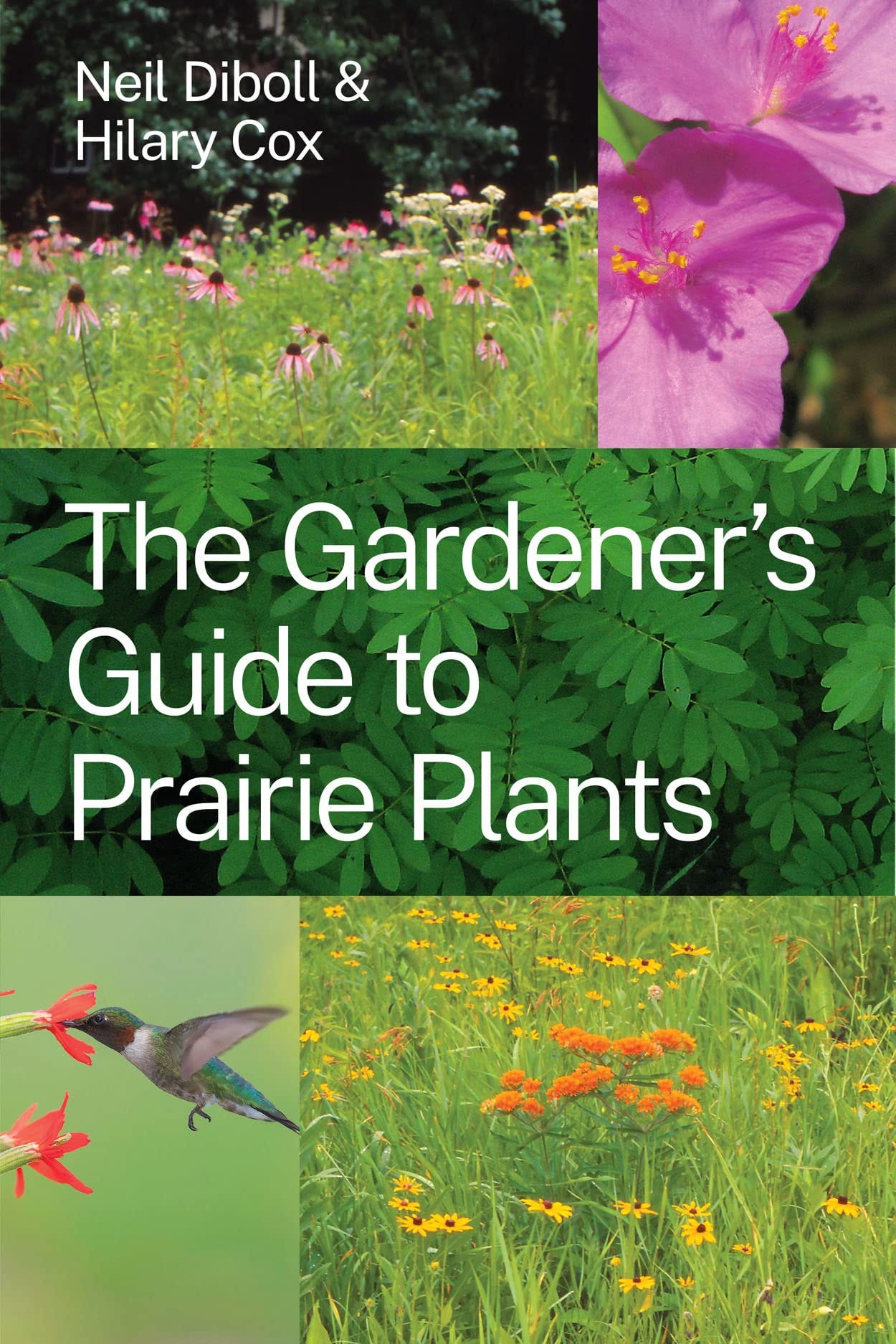Some people have told me that I have a botanical book addiction, they might be right. One thing that I absolutely love about horticulture, is that there’s always something new to learn. Whether it’s a different technique, a unique design philosophy, or an entire paradigm shift in your thinking, it is a career and a passion that is made for curious minds. And, for me a big part of that informational exchange is in the form of books. So this week, I thought that I would share what’s on my coffee table right now. These are not in any particular order, just as the stack sits.
Sowing Beauty by James Hitchmough (2017)
Over the last decade, James Hitchmough has gone from head professor (at Sheffield University’s department of Landscape Architecture) to world-renowned urban planting design expert. This book is a compilation of his years of study and practice. It takes you on a ride through many of his best known planting projects, with detailed accounts of the principals used and lessons learned. It’s an invaluable reference for both meadow builders and public planting designers. With lists of plant material, design concepts and finished results. It’s a great one for your reference library, my copy is well-used and slightly dog-eared as I often find myself re-reading sections and looking things up.
The Gardener’s Guide to Prairie Plants by N Diboll & H Cox (2023)
Here’s what we’ve been waiting for! an informative tome exploring prairie plants in all their glory. Ever since I first came across the Dutch Wave and Naturalistic design movements, I’ve looked for a single reference that covers this wide-ranging group of plants. This guide gives some great tips and helpful information on the prairie ecosystem and how it functions in situ. Plus for each individual plant, a list of their native range, various growing conditions and photos of each stage in their lifecycle (there’s even a group of look-a-like species for each one). This is a fantastic help for prairie plant id, and great inspiration for anyone wanting to build their own dreamy naturalistic prairie. I feel like I’m going to get a lot of use from this one.
Forgotten Fires (Native Americans and the Transient Wilderness) by Omer Stewart (2009)
This title was a recommendation made during a pollinator conference earlier this year. And after reading through it, I can see why. It’s a compendium, detailing the use of fire as a method of controlled disturbance in the landscape. Not through conjecture, but by presenting the first hand accounts of Europeans during the colonization of North America. Finally, we get a better understanding of just how skilled and wide reaching indigenous stewardship actually was. The book investigates various regions in detail, each with accounts of the techniques as they were witnessed, through journal entries, logs and correspondence. It’s revelatory to see what was denied for so long, the indigenous population has been caring for these lands, in a thoughtfully sustainable way for millennia, and it’s time to address the imbalances that resulted from its abrupt end.
København (Urban Architecture and Public Spaces) Edition Detail (2021)
This is one for all of you landscape architects and urban planning nerds, obsessed with the cool innovative vibes that Copenhagen is famous for. It’s a deep dive into one city’s propensity to look forward, in a post-war world, and welcome new ideas for public use architecture. There are lots of fantastic schematics, photos and graphics that give you a real feeling of the space and how it all functions behind the scenes. Each case study also lets you into the secrets of how these unique projects came into being including how they connect to the greater environment and culture that surround them. It’s both informative and beautiful.
Making Meadows (Creating Wildflower Ecosystems West of the Cascade Mountains, A Northwest Meadowsacpes How-To Zine) by Eric Lee-Mäder (2022)
This guide has everything that you need to know about meadow making in the Pacific Northwest. It may be diminutive in size, but it is packed with information, from site planning to longterm maintenance. With detailed lists, how-to scenarios and loads of the authors personal experience. And, as the owner of Northwest Meadowscapes (and a self-professed, meadow punk) you can be assured that Eric knows what he’s writing about. It’s all presented in the style of a low budget, punk zine, which I love. With gritty graphics, thoughtful poetry and a genuinely down-to-earth feeling. It’s well worth getting off the beaten path for this one, if you’re interested in the art of meadow building.
Botanical Curiozine, Sunflower by Virens Studio (2023)
This one is close to my heart, and rather than a printed tome, it is housed on my computer. I wanted to write something that combines all of the best, most interesting bits of modern horticulture, with a nod to the Victorian curio cabinets of old. It’s a look at history, culture, art and science through the eyes of a common garden plant, the sunflower. We explore it’s origins in Mesoamerica as a symbol of war and protection (Shield-flower), its journey from a flower of peasants to the walls of world renowned galleries and peaceful placards. Plus, how the sunflower has influenced scientific discovery, its place in ecosystems and deep connection to wildlife. All presented in easily accessible bites of information with colourful graphics, ezine style.
I’d love to know if you’ve read any of these and what your thoughts are. Or, if you have some favourite books that I need to check out, because much like plants, there’s always room for more in my collection ;)
Sara-Jane at Virens Studio











Thanks for this list! In the southern hemisphere Bruce Pascoe’s book Dark Emu has done what Forgotten Fires looks to be doing in the north. Many exciting developments are happening because Indigenous knowledge is being listened to. Plants by Zena Cumpston, Michael-Shawn Fletcher and Lesley Head is another more recent look at Indigenous ecological expertise in Australia. 🙂🌿